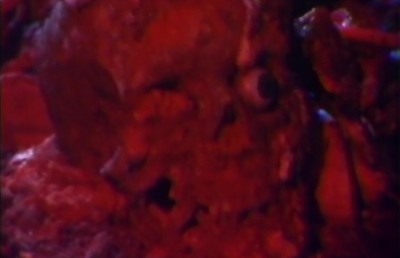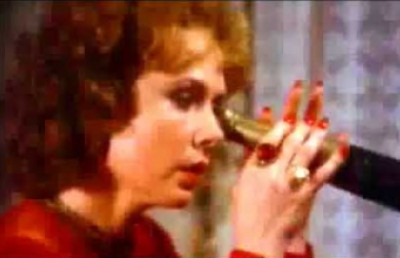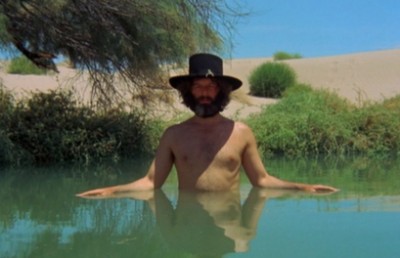The Style of Sleaze: The American Exploitation Film, 1959-1977 (2018)

The Style of Sleaze: The American Exploitation Film, 1959-1977 (2018)
Calum Waddell
Edinburgh University Press
pp. 252
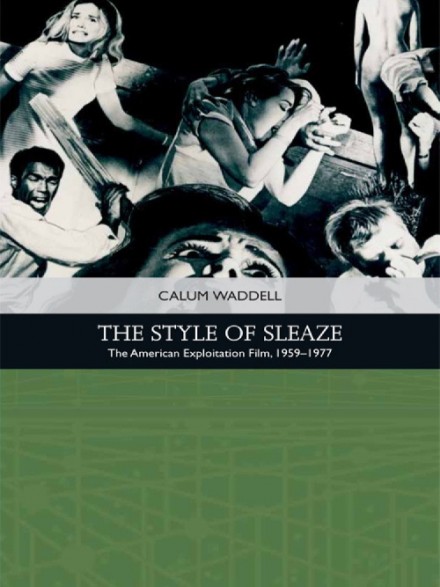
Few cinematic styles remain as infamous, or ambiguous, as exploitation – an umbrella term, writes Calum Waddell, that looms over “the carny marketing of old, low-budget movies – typically generic – offering gory or sexy films” (1). As his book, The Style of Sleaze (2018) makes clear: if the women have big busts; the men, a violent and hypersexual personality; and the film, an association with 42nd Street’s famous grindhouse theaters, then the movie is probably considered ‘exploitation.’ But, to Waddell, this vague criterion – equally applicable to ‘paracinematic,’ ‘trash,’ or even ‘B’ cinema – is not good enough: “nothing, it seems, is quite this straightforward” (1). The Style of Sleaze‘s big question then, is a simple one – what is in exploitation film? – and as Waddell suggests, the answer is more straightforward than past scholars (notably Robin Wood) have indicated. Picking up, unofficially, where Eric Schaefer left off in his Bold! Daring! Shocking! True! A History of Exploitation Films, 1919-1959 (1999), The Style of Sleaze chronicles the post-classical, and final, phase of the exploitation era. Waddell carefully outlines exploitation’s history, techniques, and key works, and in doing so, shows it to be less a genre than a specific period in American film history. The raw, gritty, and ‘in-your-face’ style may not have lasted, but its provocative portrayals of sex, violence, and race continue to breathe life into contemporary mainstream media.
Put simply: the exploitation movement showed what Hollywood could not. Without access to money, back-lots, distribution rights, or well-known actors, its only asset was its ‘taboo aesthetic,’ the exploitable element – be it blood and gore or breasts and groins (often presented in some combination) – that set the style apart. And yet, the goal of these films was not so dissimilar from the mainstream they stylistically opposed. Though romanticized by Quentin Tarantino, Robert Rodriguez, and a slew of contemporary scholars, the exploitation movement existed, almost solely, to make money: they were “capital-intensive projects, made for a fast profit” (2). Exploitation cinema may have been topical, capitalizing on social anxieties, from the Vietnam war to the insatiable female and inter-racial sex, but such subject matter was used, or exploited, merely to cash out. Further, as Waddell is quick to point out, exploitation cinema was often conservative in nature, presenting ‘warning narratives’ that chastise the very spectacle it capitalizes on.
The Style of Sleaze focuses on twelve films that Waddell believes defined the movement. Beginning with the relaxation of the notorious Hays censorship laws and ending with the advent of the VHS tape, these movies, motivated by a chronological one-upmanship – each more extreme than the last – were eventually coopted by either Hollywood big-budget cinema or near-plotless hardcore pornography. The Style of Sleaze argues that American exploitation cinema represents a unique period of commercial filmmaking rooted in the 1960s and ’70s, and while Waddell’s theoretical postulations occasionally confuse his mission statement, the book succeeds in constructing a concise, though perhaps short-sighted, historiography of the contentious movement’s influential style.
In the interest of clarity, The Style of Sleaze is divided into three sections, each accounting for what Waddell considers to be a semi-distinct branch of the exploitation film. The first, and longest, is sexploitation, covering a twelve-year period defined by “the exhibition of nudity or the proof that real intercourse is happening” (101). Waddell focuses on five films that, apart from chronicling the period’s transition from softcore simulation to penetrative sex, exhibit stylistic growth, from subject matter to character development. Any other ‘sexploitation’ films, Waddell asserts, merely copied his canon’s originary tropes. Beginning with Russ Meyer’s Lorna (1964) and ending with Radley Metzger’s The Opening of Misty Beethoven (1976), the sexploitation period capitalized on, quite simply, sex, and was forced to present increasingly graphic visuals to keep up with the evolving liberality of the sexual revolution.
As the sexploitation film became more ‘progressive’ – introducing lesbian, interracial, and even female-on-male intercourse – so too did the movement’s portrayal of women. Where the protagonists of Lorna or Behind the Green Door (1972) are presented as sexual victims, later films like Misty Beethoven or The Devil in Miss Jones (1973) feature heroines who assume control of their own sexuality. In taking advantage of the men in their lives, the exploited become the exploiters, and in doing so, seem to destabilize the movement’s overt misogyny.

Yet, as Waddell is quick to remind the reader, these stories of sexual liberation persistently submit to the patriarchy. Here, he introduces one of The Styles of Sleaze’s more intellectual thru-lines: that exploitation’s strange legacy evolved from this dialectic of liberal/conservative. Misty becomes a madame in the same industry that enslaved her, while the sex-addicted Miss Jones is sentenced to purgatory with an impotent man, her punishment perhaps “predicting an era when sexploitation itself will be ‘banished’ or exhaust its spectacle” (99). Following Misty Beethoven, a larger-budget feature that lost the grit of its cheaper predecessors, sexploitation fractured into either mainstream cinema like The Last Tango in Paris (1972) or hardcore pornography, the former doing away with sexploitation’s raw style and the latter its character-driven narratives. To Waddell, sexploitation is the base level of the exploitation film: violence and non-white characters may come and go, but sex and nudity remain integral to each of the period’s features.
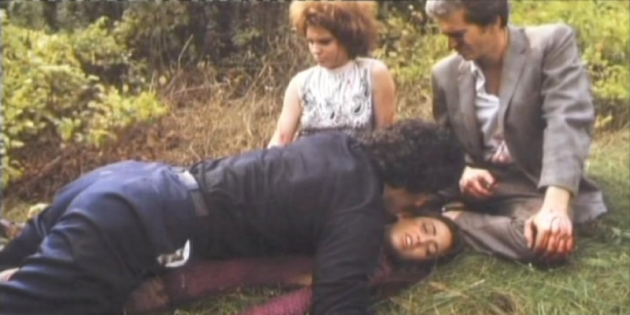
One of The Last House on the Left’s many disturbing scenes
In the next section, Waddell introduces exploitation-horror, a movement whose films, including The Night of the Living Dead (1968) and The Texas Chainsaw Massacre (1974), stood apart from the polished slashers of the 1970s and ’80s. Where Halloween (1978) and Friday the 13th (1980) entertained their audiences with big budgets and jump-scares, exploitation-horror – characterized by Waddell as ‘feel-bad’ movies – gloated in “miserable, desexualizing, [and] degrading” violence. Such films, Waddell writes, worked towards an as-yet-unheard-of, and strangely Bazinian, style of brutal realism, whose intent on making their spectacles believable lent itself to a verité style of handheld cameras, unknown actors, and deceptive marketing techniques, notably the ‘based on a true story’ intertitle (122). Put simply, exploitation-horror was meant to disgust its arrested audience; just as sexploitation was concerned with the ‘money-shot’ – the proof of a spectacle well-done – exploitation-horror captured “the human body in its final, agonizing moments and, often, subsequent mutilation or molestation” (114). Films like Wes Craven’s The Last House on the Left (1972), whose explicit torture of two teenage girls resulted in its being banned from several countries, opened the floodgates for the budding gore-epoch, showing what a horror film could do, if it desired. But, like the sexploitation movement, exploitation-horror quickly petered out, its verisimilitude of bodily horror either re-presented in a number of mediocre copycat films (I Spit on Your Grave; The Driller Killer, 1979) or commercialized and muted in the slashers of the coming decade.
Waddell closes The Style of Sleaze with an ambitious analysis of three ‘true’ blaxploitation films: Sweet Sweetback’s Baadasssss Song (1971); Super Fly (1972); and Coffy (1973). All others, from Dolemite (1975) to Foxy Brown (1974), embraced a glitzier production that replaced the movement’s spectacle of racial strength and rebellion with generic tropes of the big-budget action film. Shaft (1971) in particular, may have embraced ‘street lingo’ and a stereotypically ‘black attitude,’ yet the movie conforms to the style of a Hollywood gangster film, with fancy tracking shots and a detective protagonist working alongside the police. Requiring more than just a suave black lead, blaxploitation, like the greater movement it belongs to, is defined by a low-budget grit whose exploitation – in this case, black sexuality and insurrection – is persistently reinvented and innovated in the hope of financial gain. However, just as sexploitation, perhaps unconsciously, reflected contemporary portrayals of women, and exploitation-horror, albeit loosely, Vietnam and a growing government mistrust, blaxploitation’s topicality – namely the fractured race relations of 1960s America – proved itself inextricable from the movement’s spectacles of drugs, pimps, and inner-city life. Such movies were out to make money, but, due to their contentious subject matter, were inevitably political, often defending, or even justifying, the very characters and themes they exploited. Antiheroes, like Super Fly‘s (1972) Youngblood Priest, may capitalize on black stereotypes, but they also interrogate racial prejudice: in particular, crooked police and systemic racism. Regardless of blaxploitation’s financial intention, the films flaunted black bodies and sex in a ‘how do you like that?’ manner that purposely challenged more strait-laced productions like Guess Who’s Coming to Dinner (1967). As Waddell writes, “it is difficult to accuse the form of being demeaning when so few films, even now, are willing to offer any kind of black sexuality to audiences” (180).
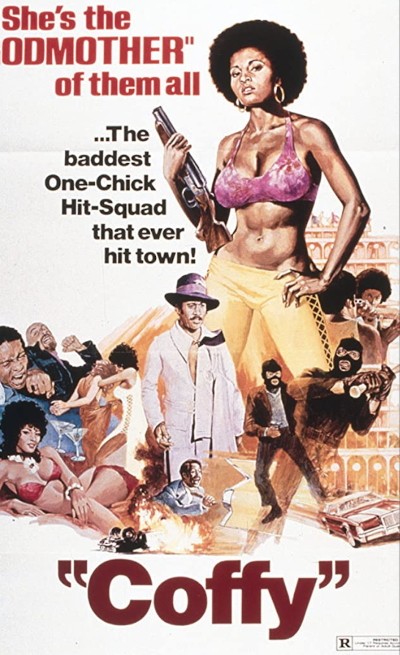
In The Style of Sleaze’s penultimate, and perhaps most interesting chapter – “The Blaxploitation Female” – Waddell discusses Coffy, a feature that could exist comfortably within any of exploitation’s three subsections. Starring Pam Grier as a nurse/vigilante prostitute, Coffy was blaxploitation’s answer to accusations of misogyny – charges levelled against the macho and hypersexual Sweetback and Youngblood Priest. Coffy, though directed by a white man, subverts the blaxploitation style by presenting sex and violence from a female perspective. Opposing the lone-wolf protagonists of blaxploitation’s previous films, Coffy gives back to her working-class community by assisting in both the hospital and the streets where she murders drug-dealers; she represents “an attempt to destroy, and rebuild, the facets of the blaxploitation genre in a less masculine, and more politically explicit, form” (206). Still, in line with the underlying problematics of the ‘liberating’ sexploitation film, Coffy is “eroticized, exposed and sexually humiliated” throughout the movie – her punishment for striving towards a corporeal and racial liberation. Once again, bemoans Waddell, “the exploitation style… critiques the very things that it visualizes for financial gain” (201, 207). Simultaneously progressive and conservative, Coffy closes The Style of Sleaze on a note of uncertainty that stands in for popular culture’s equally muddled understanding of the exploitation genre.
If The Styles of Sleaze’s purpose is to begin rethinking America’s post-classical exploitation period, then it does its job well. By limiting itself to twelve films split into three sub-sections, Waddell’s book establishes a basic criteria for classifying the movement, namely shock, salacity, and a gritty verisimilitude, or, as Waddell lists in his final chapter: “rundown urbanity, actual crowds, unknown actors, travelogue verité and close-up depictions of sex/nudity or prolonged scenes of violence” (213). The Style of Sleaze establishes its lofty goal of generic redefinition through its intertextuality, a persistent comparison of sexploitation, exploitation-horror, and blaxploitation that establishes the greater movement’s unifying aspects. At an individual level, Misty Beethoven or Super Fly may seem reflexive or sociopolitical, but – as Waddell is quick to remind – these films are rooted, first-and-foremost, in gruesome spectacle and handsome box office returns. Still, such an emphasis on homogeny, especially from the perspective of some unified directorial intent, does not allow for The Style of Sleaze’s more nuanced or conceptual points to take off. Waddell has a difficult time giving exploitation’s unintended and often ideological effects the same credence as he does their documented financial goals. While Coffy, for instance, reshaped cinema’s strong female protagonist, Waddell is quick to privilege the film’s objectives of sex, violence, and money. This hard binary between purpose and result leads, not only to jarring dichotomies between adjacent paragraphs, but an obvious preference for facts over hypothesis and reception. The Style of Sleaze does include post-structuralist theory – most notably a comparison between pornography’s ‘money-shot’ and Marx’s commodity fetishism – but its inclusion feels out of place and obligatory, as if Waddell was pressured to give his historiography an ‘intellectual’ bulk.
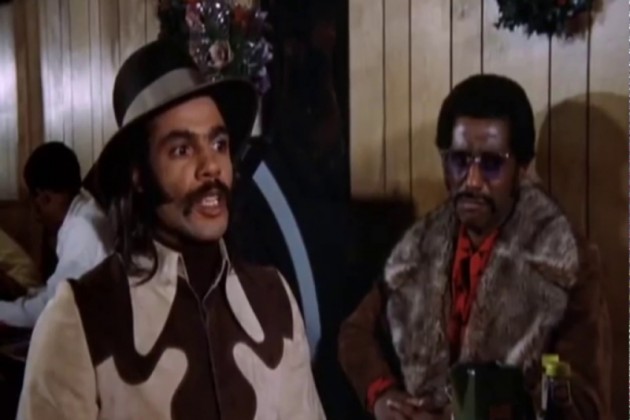
Super Fly
Still, to redefine exploitation– not as a loose catchall for ‘trash’ cinema, but as an established artistic period – perhaps requires this focused and partisan analysis. Waddell’s tunnel vision may not excuse The Style of Sleaze’s use of theory, but its success in connecting twelve disparate films with the thread of economic spectacle is a first-step in outlining the movement; as Waddell closes his book, “while many will argue with my own conclusions, it is my hope that exploitation may be viewed as a style in forthcoming studies – a style that inspired filmmaking for decades afterwards” (222). In laying the groundwork for future analysis, and leaving a few stones unturned in the process, Waddell’s The Style of Sleaze will, with luck, prove to be a foundational and thought-provoking foray into the study of American post-classical exploitation: to borrow The Texas Chainsaw Massacre’s infamous tagline: “It really happened. It’s Terrifying. It’s Here.”



